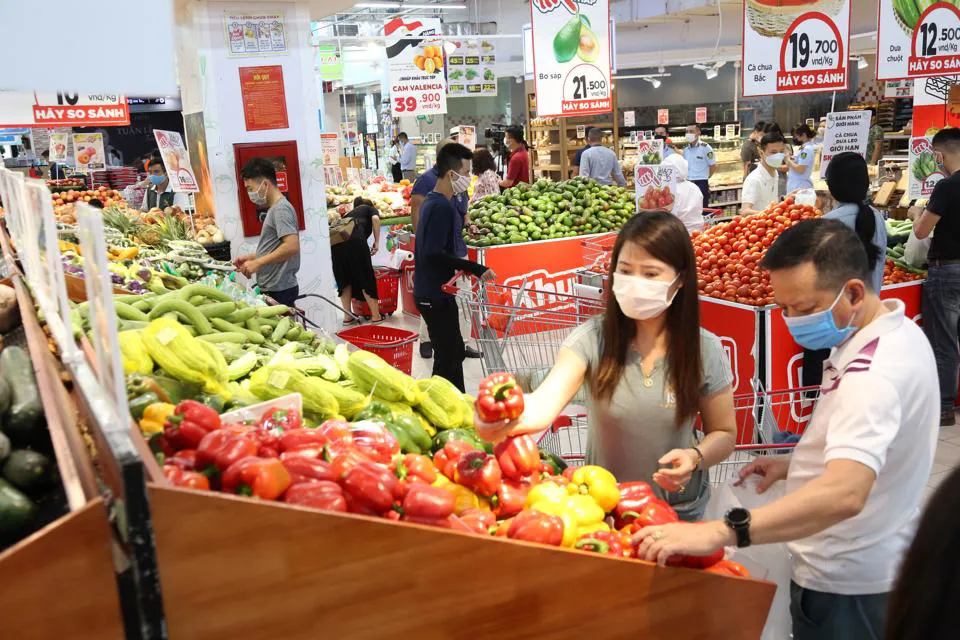C.bank expects Vietnam's inflation to stay below 4% in 2022
Against the backdrop of rising USD value, the Vietnamese Dong has depreciated by a mild margin of 2% compared to Thai’s Bath (down 7%), Japanese Yen (14.6%), and Taiwanese dollar (5%).
The Vietnamese Government is capable of keeping the consumer price index (CPI) in 2022 below the 4% target, with efforts to stabilize foreign exchange and interest rates.
| Customers at Tops Market. Photo: Hai Linh |
Deputy Head of the Monetary Policy Department under the State Bank of Vietnam (SBV) said during a recent press conference on June 18.
Following the Federal Reserves (Fed)’s decision to raise its policy rates by 0.75%, the highest rate hike since 1994, central banks around the world have followed suit with a rising margin of 0.5-1%.
The US Dollar Index, used by traders seeking a measure of the value of USD against a basket of currencies used by US trade partners, rose by 9-10% against early 2022 and led to the depreciation of other currencies, such as Thai Bath (down 7%), Japanese Yen (14.6%), Taiwanese dollar (5%).
Amid the strong global volatile financial market, Quang predicted Vietnam’s average lending rate remained stable with a slight increase of 0.09% and the depreciation of the Vietnamese Dong by a mild margin of 2%.
Quang, however, suggested Vietnam would face huge pressure from rising inflation in the global economy, especially due to high prices of strategic commodities as the result of the disruption of supply chains.
Dao Xuan Tan, head of the SBV’s Foreign Exchange Department added the country’s foreign exchange reserves of over $100 billion, or 3.1 month of merchandise imports, have been one of the key factors for the SBV to ensure stable monetary policy.
“The SBV would continue to manage foreign exchange policy flexibly and in line with the market situation,” Tan said.
HSBC in its latest Vietnam report forecast the country’s inflation in 2022 to stay around 3.5%, below the 4% target set by the National Assembly.
The report, however, noted high energy prices would be an issue for the remaining of the year, and expected the SBV to deliver a possible 50 basic points (bp) rate hike in the third quarter, before delivering three more 25bp hikes in 2023.
Minister of Finance Ho Duc Phoc in a discussion session at the National Assembly on June 8 noted Vietnam’s independence in the food supply, which accounts for 40% of the commodity bundle used for the calculation of the consumer price index (CPI), has been a key factor in helping the country to keep inflation under control.
Hanoi’s consumer price index (CPI) in June expanded by 0.7% month on month, up 3.15% against late 2021 and 4.31% year on year. This resulted in the CPI expansion rate in the first six months at 3.25% year on year. Nine out of 11 commodity groups, which are components of the basket for CPI calculation, witnessed a month on month hike. |












